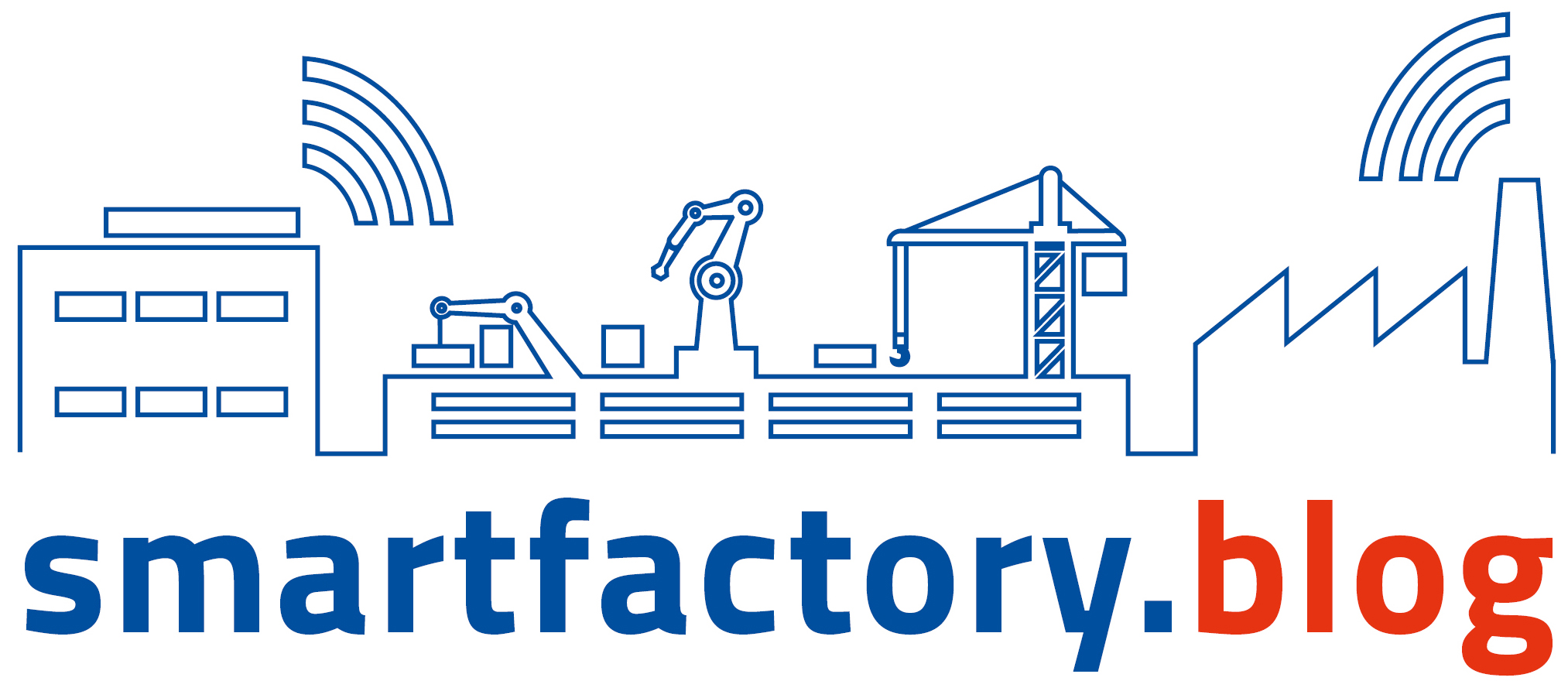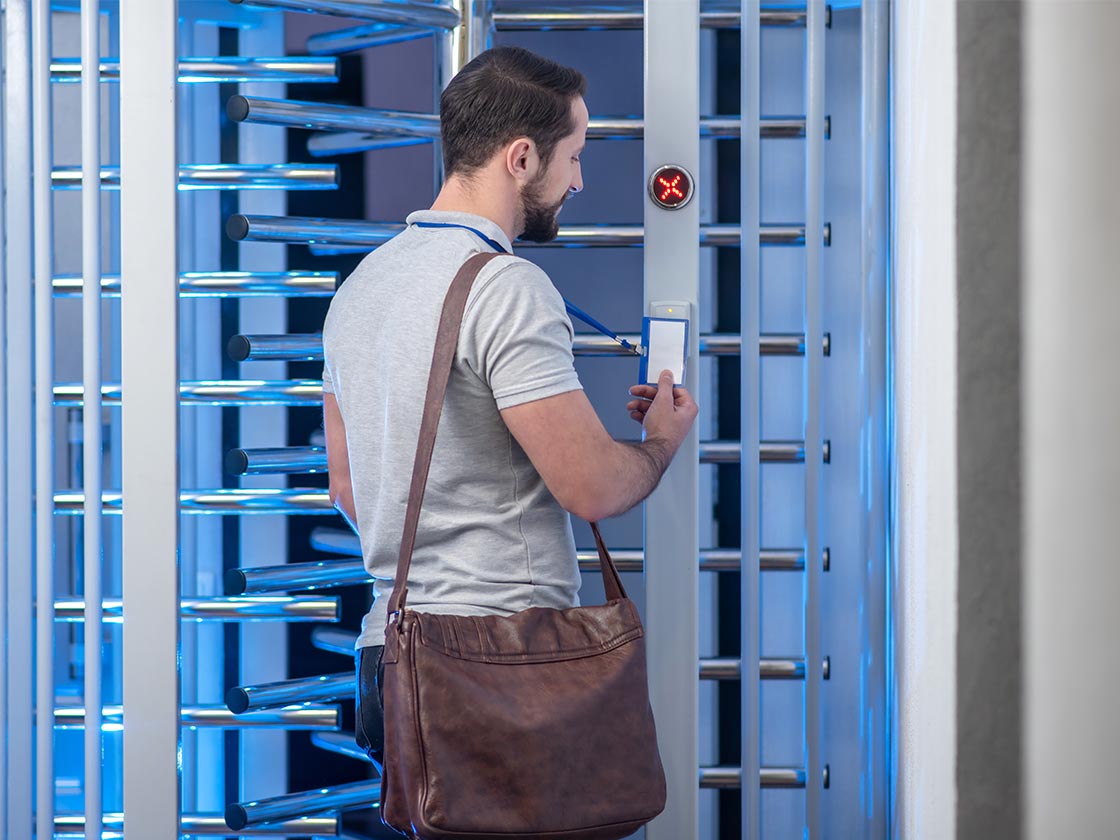One might think that a digital access control system has little to do with the manufacturing IT of a Smart Factory. But if you look a little closer, you will find synergies that companies no longer wish to be without. Find out in this blog post all about access control and how to easily implement the functions with the Manufacturing Execution System (MES) HYDRA from MPDV.
The fields of application for digital access control are wide ranging. Picture this: I am on my way to work by car. Reaching the company premises, a camera scans the license plate and a barrier opens at the car park. As soon as I have driven over the sleeper, the displayed number of free parking spaces is reduced by one. I park my car and walk to the entrance. A reader scans my ID card, and I can go through the turnstile. Clock-in is recorded in Time & Attendance and my working time has officially started. I need a dedicated access authorization for production. As my ID card has this authorization assigned, the door opens instantly. I can also log on orders with my ID card and authorize postings in production. After my shift, I leave production and clock out at the turnstile at the end of my working day. The turnstile unlocks and I head for my car. My license plate is recognized at the exit, the barrier opens automatically and the counter for free parking spaces increases by one.
More than time and access
Let’s have a closer look at what happens behind the „scenes“ and how it is all implemented.
- At the car park: The camera at the entrance transfers the license plate to the access control. The employees‘ data from the database matches the one from license plate of the car and confirms it. The system also knows how many car park spaces are left and how many cars are on the premises. HYDRA uses zones to implement this principle. You can define how many persons, or in this case cars, can be in a zone at one time. If the car park is full, the barrier does not open anymore until another car leaves the space.
- Entrance of the turnstile: The employee ID card contains a character string that ensures that the employee can be uniquely identified. The system also checks whether the employee is still with the company or whether the ID card has been blocked. HYDRA offers a combination of access control and personnel time recording. Therefore, the employee only needs to scan the ID card once to operate both applications.
- Access to production: Specific areas within a company can be released or blocked for individual employees or groups by using flexible authorization concepts. Unlike physical keys, digital access authorization can be withdrawn or granted in no time. If the employee loses their ID card, it can easily be rectified. The old ID card is blocked and a new one is created in the system. If the old ID is found, it can no longer be used. The character string (card number) of the ID card is invalid.
- Postings in production: Since the employee ID card and the associated employee data are managed in a central database of HYDRA or in the Manufacturing Integration Platform (MIP), the ID card can be used for different applications. For example, the system can check whether an employee who wants to log on an order has entered the company premises correctly.
- At the turnstile: Reading the ID card at the exit again generates two postings: leaving the zone and the end of the working time. You can configure the system in a way that when the employee clocks out, they log off from all running operations.
- At the exit: Reading the license plate at the exit ensures that not only is the number of cars in the car park reduced, but it is also known which car has left the parking space. The system can now create a list that contains all employees or cars. This is a big plus because in the event of an evacuation, a rescue list can be quickly generated.
Further fields of applications for access control
The access control in HYDRA can also control lifts. This is important if an access authorization is required to open the elevator door on a particular floor. A random bag check may also be indicated as employees leave the company. How this control is put into practice is down to the individual company. The security control center provides greater transparency in terms of plant safety by clearly displaying which secured doors are currently open and if there are any malfunctions. Manipulation and sabotage of doors, readers, and other access control components can also be detected and monitored.
Needless to say, the system is capable of managing visitors and the corresponding ID cards. For these persons, temporary authorizations apply, which automatically expire if the visitor pass is not returned. Visitors accessing the premises are also documented.
By the way, the digital access control with HYDRA not only logs successful accesses, but also access attempts. Unresolved incidents can thus be identified, and possible security breaches uncovered.
Benefits of integration into manufacturing IT
Granted, some of the functions mentioned are also provided by a stand-alone access control system. The advantages of an integration into the manufacturing IT or, more specifically, into HYDRA are primarily a mutual access to the employee data as well as the use of the employee ID card for all applications. HYDRA users appreciate these synergies. That’s why a subsequent introduction of access control is common among HYDRA users.
Find out more about access control with HYDRA here.


